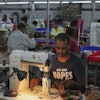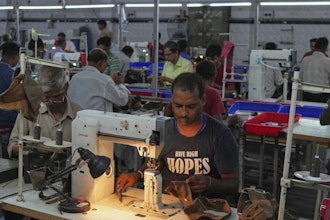
This article originally appeared in the September print issue of IMPO Magazine. To view the digital version, click here.
Mexico’s factories continue to expand and the country is expected to be the manufacturing growth leader in Latin America through 2016, according to a report from the MAPI Foundation, the research affiliate of the Manufacturers Alliance for Productivity and Innovation.
The Latin America Manufacturing Outlook is a semiannual analysis that examines the latest trends and provides a near-term forecast for 14 major industries.
The report, authored by Fernando Sedano, Ph.D., MAPI Foundation economic consultant, focuses on Latin America’s three largest economies — Brazil, Argentina, and Mexico — as these countries are responsible for more than 80% of the manufacturing output in the region.
Sedano forecasts that overall manufacturing output in Latin America will decline 0.9% in 2015 and increase 1.9% in 2016. The latter is a modest improvement from 1.8% growth anticipated in the foundation’s December 2014 report.
“The regional picture masks sizable differences across countries,” Sedano cautions. “There is a deeper than expected recession in Brazil that is offsetting the solid performance of Mexican factories. Argentina’s manufacturers are also in recession, but it is milder than Brazil’s.”
In developing his forecast, Sedano uses data from national statistical agencies, assigning weighted average annual production indexes for each industry. The weights are determined by a country’s value added in U.S. dollar terms in each sector, using a proprietary econometric model.
BRAZIL
Brazil’s manufacturing industry (48.7% of the MAPI Foundation’s regional index) saw its output decrease by 8.4% year over year between January and April 2015, including an alarming 21.3% decline in motor vehicles production, the sector at the heart of the industrial recession.
The MAPI Foundation forecasts that Brazil will see a 3.8% manufacturing production decrease in 2015, down from 1.6% growth anticipated in the previous report. Sedano predicts a timid rebound of 0.7% growth in 2016, including some improvement in the carmaking sector that will barely push most intermediate industries out of recession.
MEXICO
Conversely, the automotive sector remained the growth engine in Mexico, expanding output by 11.1% in the January-April year-over-year period. Its manufacturing output (38.7% of the index) increased by 3.2% in that period, with the automotive sector, fabricated metal plants, and rubber and plastics producers showing above-average output gains.
The expectations of stronger manufacturing growth in the U.S. next year are positively affecting Mexican forecasts. Sedano anticipates 2.8% expansion in 2015 and a 3.4% advance in 2016. The December 2014 forecast was for growth of 2.8% in 2015.
ARGENTINA
Argentina’s manufacturing prospects (12.6% of the index) will remain stagnant. Brazil’s auto problems are cascading into Argentina, as carmakers there ship 60% of their production to Brazil. Muted domestic demand is also a problem. The MAPI Foundation forecasts a contraction of 0.9% in 2015 and a weak 1.8% expansion in 2016. The December 2014 report anticipated a contraction of 0.7% in 2015.
Four of the 14 Latin American industries covered in the report are expected to grow in 2015 but 12 should advance, albeit marginally, in 2016.
Three industries — food and beverages, motor vehicles, and machinery and equipment — account for roughly 45% of the region’s manufacturing and are therefore most important to the forecast. Production of food and beverages — the largest industry and one of the most stable — should increase 1.3% in 2015 and 2.5% in 2016. The automotive sector is forecast to increase production a timid 0.5% this year and 4.1% next year. Machinery and equipment is forecast to see a decrease of 3.6% in 2015 before a 1.6% advance in 2016.
U.S. Deficit in Manufactures Up 19% in First Half of 2015, Chinese Surplus Rises by 14%
Improved second quarter trade data for manufactures did little to stem the tide of a downward trend for the United States, according to an analysis from the MAPI Foundation.
In the report, Ernest Preeg, Ph.D., MAPI Foundation senior advisor for international trade and finance, notes that U.S. manufactured exports decreased by 2%, to $298 billion, in the second quarter as compared with 2014. The U.S. deficit in manufactures rose by $21 billion, or 15%, compared with the second quarter of 2014. This follows a 30% increase in the manufacturing trade deficit in the fi rst quarter, inflated by weather issues and a West Coast dock strike.
Chinese exports were also down 2%, to $533 billion, in the second quarter on a year-over-year basis. China’s trade surplus increased by $14 billion in the second quarter over 2014, or by 6%, and follows a 24% rise in the fi rst quarter of 2015.
“Although global trade in manufactures is growing at a much slower pace in 2015, the U.S. and Chinese trade imbalances continue to surge at high, double digit rates,” Preeg writes. “The U.S. $48 billion deficit increase in the fi rst half of the year equates to a loss of 300,000 trade-related American manufacturing jobs, and the deficit is on track for a loss of 500,000 or more jobs for the calendar year.
“This is the sixth consecutive year of soaring trade deficits and very large job losses, which from 2009 to 2015 will total 2.5 million, or 25% of the sector labor force,” he adds.
The 10 largest high-technology export industries made up 65% of total U.S. manufactured exports and 52% of Chinese exports in the first half of 2015. Chinese exports in the first half were $532 billion, or 41% larger than the $376 billion of U.S. exports, and were in surplus by $166 billion compared with a $160 billion U.S. deficit.
According to Preeg, the new data, combined with China devaluing its currency relative to the dollar in order to stimulate exports, continues an unfair and unbalanced trade relationship for U.S. manufacturing.
From 2009 to 2014, the U.S. trade deficit in manufactures doubled to $550 billion, while the Chinese surplus doubled to $1 trillion and the EU surplus doubled to $500 billion.
“Sixty percent of the U.S. $600 billion annual trade deficit in manufactures is with China, and therefore exchange rate–induced exports by China result principally in increased U.S. imports, which economists refer to as the ‘beggar-they-neighbor’ effect,” he concludes.
The Manufacturers Alliance for Productivity and Innovation (MAPI) is a member organization focused on building strong leadership within manufacturing, and driving the growth, profitability and stature of global manufacturers. Read the most recent global forecasts from MAPI, as well as how U.S. manufacturing fits into the mix.























